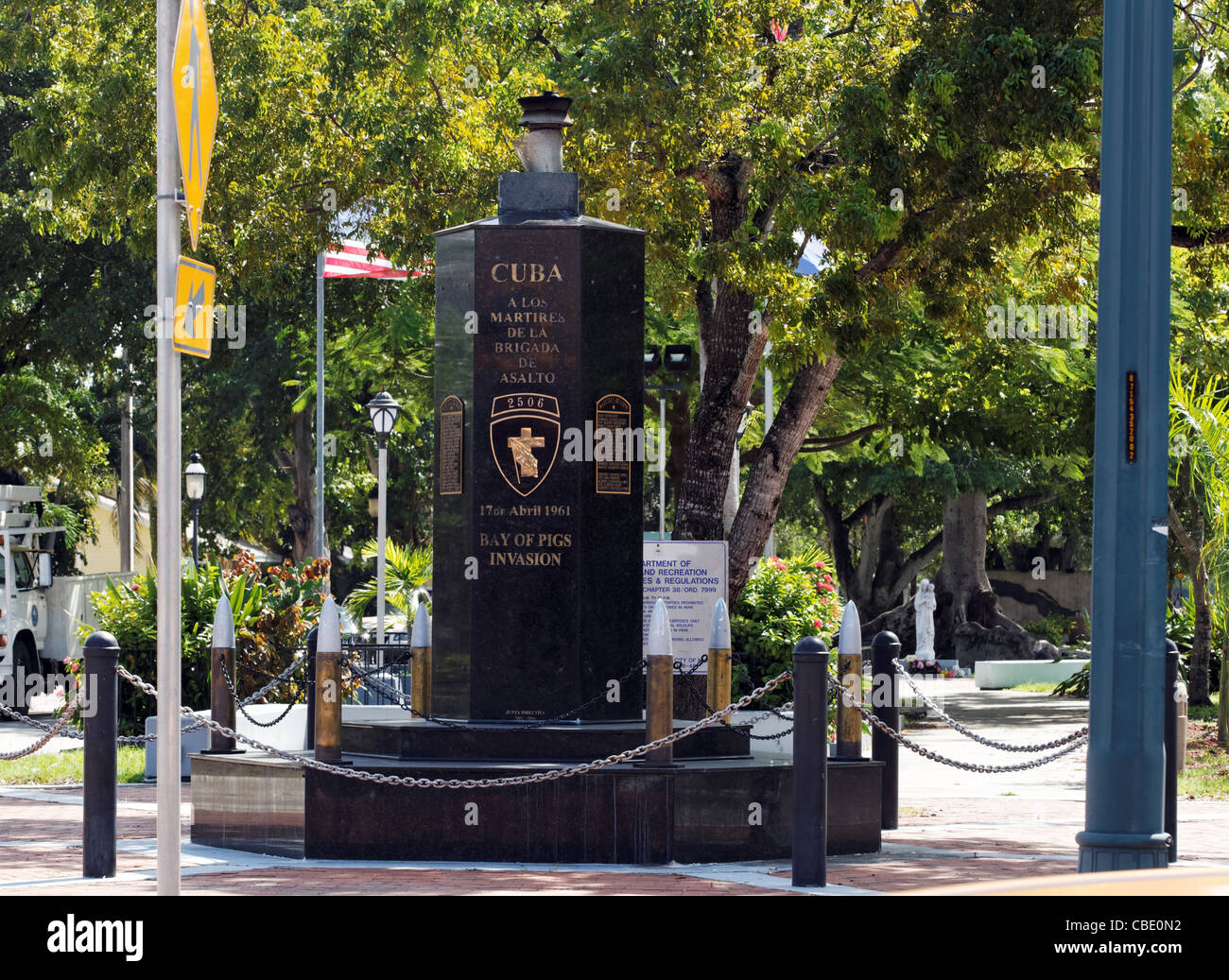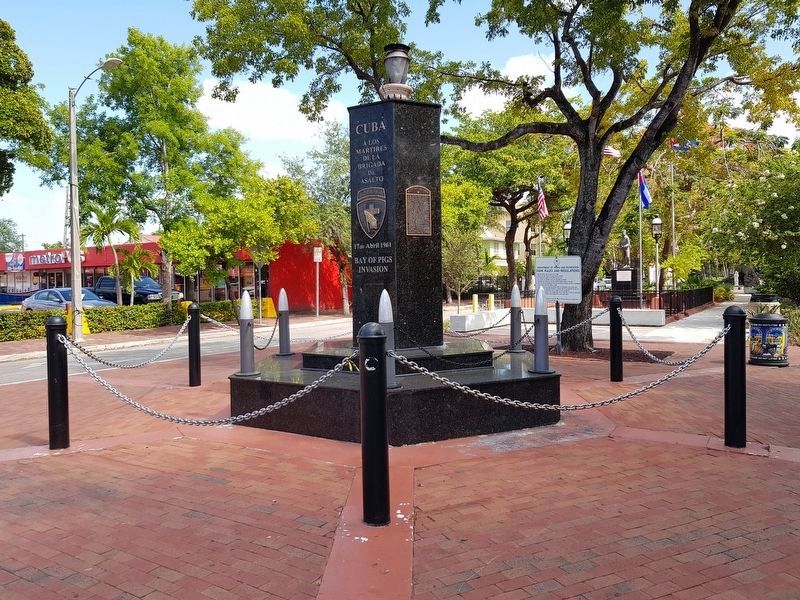Checking Out the Importance of the Bay of Pigs Monolith in Historic Memory
The Bay of Pigs Monolith stands as a somber tip of an essential moment in background that proceeds to resound via the annals of time. As an architectural indication of the Bay of Pigs Invasion, this monolith envelops not only the occasions of that fateful episode but additionally the complicated internet of political, social, and cultural effects that surround it. Past its physical presence, the monument offers as a touchstone for checking out the detailed interaction in between belief, power, and memory. By diving right into the layers of relevance embedded within this monolith, one can begin to untangle a narrative that goes beyond plain historical documentation, providing a home window into the withstanding tradition of the Bay of Pigs Intrusion and its long lasting influence on both the Cuban-American relationship and broader historic consciousness.
Historical Context of Bay of Pigs Invasion
Throughout the height of the Cold Battle in April 1961, the Bay of Pigs invasion noted a turning point in the continuous stress in between the USA and the Soviet Union. The intrusion was an unsuccessful effort by the U.S.-backed Cuban exiles to topple Fidel Castro's communist federal government in Cuba. The procedure, which had been planned under the Eisenhower management and accomplished under President John F. Kennedy, was a considerable obstacle for the USA.
The Bay of Pigs invasion not only stretched connections in between the united state and Cuba however also increased the bitterness between the U.S. and the Soviet Union. The Soviet Union saw the intrusion as a straight risk to its existence in Cuba and consequently boosted its support for the Cuban government, bring about the Cuban Projectile Crisis the following year.
Building and Design of the Monolith
The building layout of the Bay of Pigs Monument symbolizes a blend of symbolic elements that mirror the complicated historical relevance of the event. Situated in Miami, Florida, the monolith stands as a tribute to the guys who bravely combated in the Bay of Pigs intrusion. The structure, created by distinguished designer Manuel J. Diaz, includes symbolic functions such as a central pillar reaching in the direction of the skies, representing the ambitions of those who looked for to liberate Cuba from communist rule.
The monument's building and construction made use of products that stimulate a sense of toughness and resilience, with the usage of sturdy stone and concrete. The design of the monolith consists of a round plaza decorated with plaques outlining the names of the dropped soldiers, improving the melancholy and reflective environment of the site. Additionally, the consolidation of American and cuban flags linked at the base of the column indicates the unity and common background in between both countries during this turbulent duration. On the whole, the design of the Bay of Pigs Monolith functions as a touching pointer of the sacrifices made during the intrusion and the enduring legacy it keeps in historic memory.

Political Meaning and Debates
Political undertones and debates surrounding the Bay of Pigs Monolith have actually sparked disputes amongst scholars and political experts alike. The monument's construction in Miami, a city with a substantial Cuban-American population, has actually caused varying interpretations of its symbolism. For some, the monolith stands as a homage to the bravery and sacrifice of the Cuban expatriations that took part in the failed intrusion. It serves as a suggestion of the Cold Battle resists communism and the USA' commitment to sustaining anti-Castro pressures.
Nonetheless, for others, the Bay of Pigs Monument stands for an extra controversial stance. Movie critics suggest that the monolith proclaims a dark phase in united state diplomacy, highlighting a failed covert procedure that stressed diplomatic connections and had lasting repercussions. In addition, some watch the monument as a political statement versus the Cuban government, bolstering stress in between both nations.

Influence On Cuban-American Relations
Amidst the varied interpretations of the Bay of Pigs Monolith's relevance, its existence in Miami acts as a focal point for analyzing the complex characteristics that have actually influenced Cuban-American relations. The monolith, set up to memorialize the fallen short invasion of Cuba by ousted Cuban competitors supported by the CIA in 1961, stands as a suggestion of the strained historic relationship between both nations.
The Bay of Pigs invasion marked a zero hour in Cuban-American relations, leading to increased stress and a long-term influence on diplomatic interactions. For Cuban-Americans, the monument symbolizes strength and the defend liberty versus the Cuban government. On the other hand, for numerous Cubans on the island, it represents a plain suggestion of U.S. interventionism and aggression.

Collective Memory and Historical Stories
Exploring the intertwining threads of collective memory and historic narratives surrounding the Bay of Pigs Monolith exposes elaborate layers of analysis and significance. In the case of the Bay of Pigs Monolith, this cumulative memory is formed by numerous narratives that have arised over time.
Historical stories play an important function in shaping cumulative memory. They offer a structure through which events like the Bay of Pigs intrusion are comprehended and translated by culture. These narratives can develop gradually, showing transforming point of views and analyses of the past. The Bay of Pigs Monolith functions as a physical personification of these stories, preserving them for future generations to contemplate. By taking a look at the connection between cumulative memory and historical stories, we can acquire a much deeper understanding of just how occasions like the Bay of Pigs invasion continue to resonate in the here and now day.
Verdict
Finally, the Bay of Pigs monument stands as a prominent sign of the fallen short intrusion and its lasting effect on Cuban-American relations. Its building and construction and style mirror the political symbolism and controversies bordering the occasion, forming collective memory and historical narratives. By checking out the importance of this memorial, we obtain deeper insight right into the intricacies of Cold Battle history and the enduring legacy of this turning point in global relationships.
By diving right into the layers of relevance ingrained within home this monument, one can start to decipher a story that transcends plain historic documentation, supplying a home window into the enduring legacy of the Bay of Pigs Invasion and its long lasting influence on both the Cuban-American connection and broader historic consciousness.
The architectural design of the Bay of Pigs Monolith symbolizes a blend of symbolic elements that mirror the facility historic relevance of the event. In general, the design of the Bay of Pigs Monolith serves as a touching tip of the sacrifices made during the invasion and the enduring heritage it holds in historical memory.
Exploring the intertwining threads of collective memory and historic stories bordering the Bay of Pigs Monument exposes elaborate layers of interpretation and significance - Bay of Pigs Monument map.In final thought, the Bay of Pigs monument stands as a popular sign of the fallen short intrusion and its long-term impact on Cuban-American connections
Please visit one of our local supporters - Miami Pool Service Pros Pool Care Cutler Bay